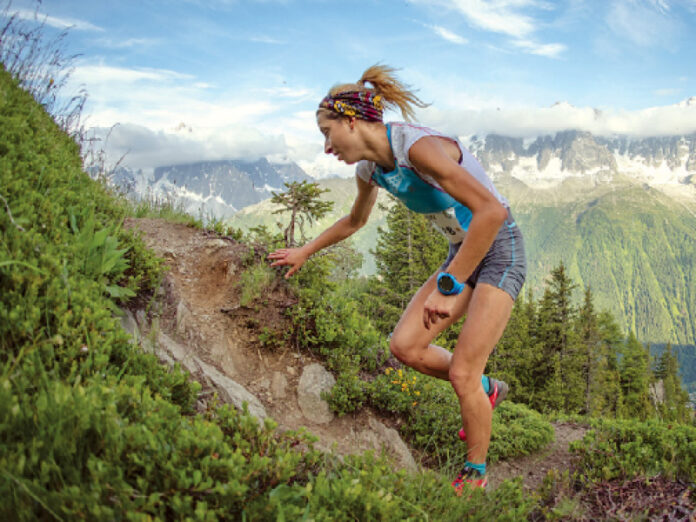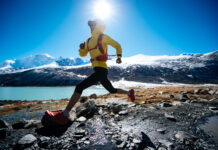
Trail racing can be exhilarating, but it’s easy to forget just how different running trails is compared to pavement.
Kelowna, B.C. running coach Rene Unser says many novice trail runners don’t realize the different strengths required to transition over from roads. More importantly, they may not be mentally prepared for running trails.
One of the first things Unser tells road runners who come out to her trail clinics for the first time is that they will have to adjust their mindset a little. Road runners are tough. They are used to running non-stop and the first few trail runs they often think, “Why the heck are we walking these hills?” Then they start to get into longer runs and realize it is an efficient way to conserve energy for longer races, particularity when there is steep terrain.
Here are Unser’s top tips to prepare you for your next (or first) trail running event.
- Not all trail races are equal: It’s important to replicate the same elevation and terrain of your upcoming race with your training runs. Not all trail races are equal. Some 10K races may have 100 metres of elevation gain, while others might have 700 metres, which require a lot more hill training. Remember, it often takes much longer to run the same distance on the trails than on the road. Mental preparation is required to be out for a long time and to know what it’s like to run on tired legs and keep going.
- Injury Prevention: Adaptation without injury takes time. I encourage new runners to work more on being consistent and to gradually add off-road training runs until they build into a few runs that are 50 to 65 per cent of their total race distance. The other important consideration is terrain. If your race is super technical, rooty, rocky and exposed, running on flat, smooth and even terrain will not help prepare you for the demands and skills required to run a technical course. If the event is in the mountains, it will help to take a weekend training on similar terrain, factoring in altitude and poor weather to test out gear.
- Cross-Training: My biggest recommendation would be strength training. Sure, runners have strong legs, however, imbalances between muscle groups are common in runners and can lead to injury. Use strength exercises designed for runners to increase structural fitness — the ability of your bones, ligaments, tendons and muscles to withstand the impact of running. Focusing on your ankles and hips. Adding balance training to your routine reduces the risk of ankle sprains, for example. Further, most people work at a desk and are susceptible to hip weakness. Hips stabilize each leg during the landing and follow through of the running stride. Weakness can lead to excess movement and/or overcompensation of other muscles and cause common injuries such as runner’s knee and IT Band Syndrome.
- Gear: Get yourself a pair of trail shoes that offer support, protection and stability where road shoes just don’t. Find a hydration pack that can carry one to two litres of fluid and other essentials such as food, a cell phone, extra clothing and a first aid kit.
- Basics: Much like cycling or skiing, look ahead on the trail to where you want to go and not down at the ground in-front of you. Remember to pick up your feet, especially when getting tired. In a race, pay attention to the trail markers and don’t get caught zoning out or just following the person in-front of you.
- Feet: Take care of your feet! If you feel a pebble in your shoe and ignore it because it “doesn’t feel too bad,” it may turn into a blister or worse and could shut down your race. Trim your toenails and purchase trail shoes a half-size larger to allow additional room in the toe box for long descents.
- Walk up hills: Walking up hills is an efficient way to conserve energy for longer races, particularly when there is steep terrain. Save your running gears for flat terrain so you can sustain your endurance.
- Race like you train: Run your race the same way trained for it. Don’t think that just because it’s race day, you’ll be able to outrun how you prepared.
















